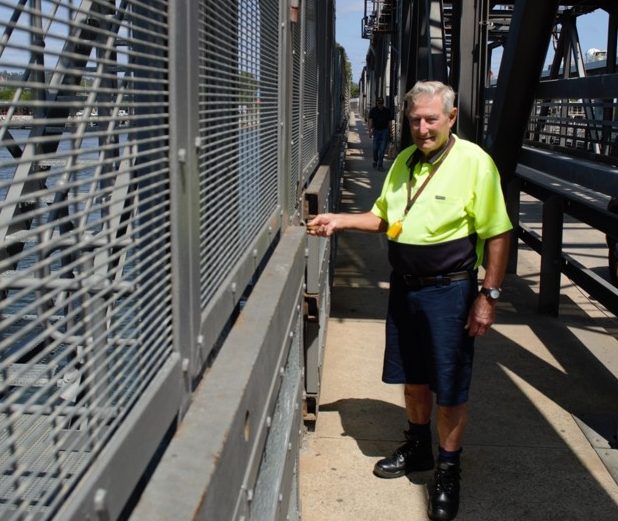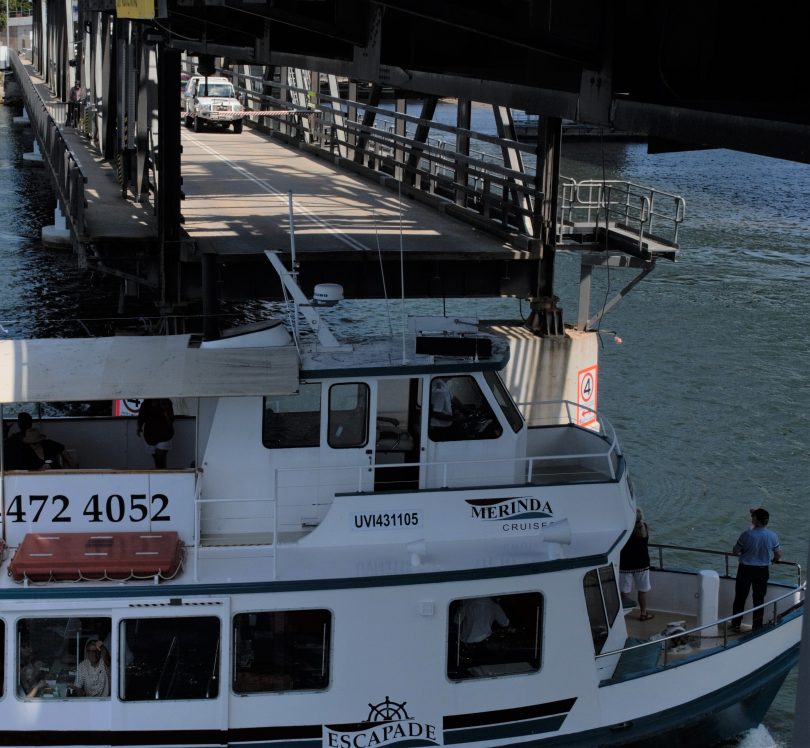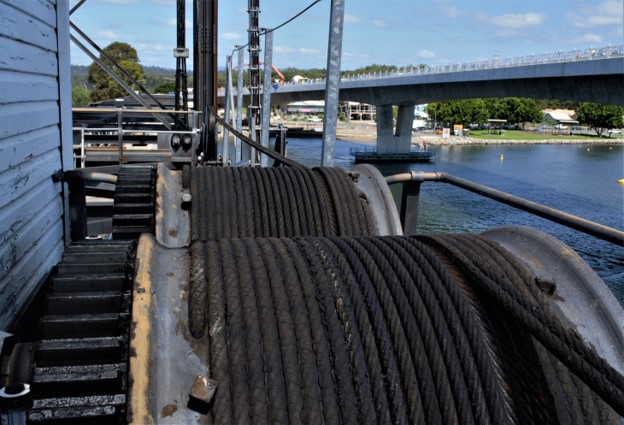
Rodney Plumb has been operating the Batemans Bay Bridge for 20 years. Photo: David Jacobs.
For more than 20 years, Rodney Plumb has quietly enjoyed one of the best views in the Eurobodalla, if not the whole NSW South Coast.
Perched high in the little cabin atop Batemans Bay bridge, he raises the span twice each day and sits 15 metres above the water, gazing out to the Tollgate Islands while the ferry passes beneath.
Nearby, the massive new bridge looms and very soon 78-year-old Rodney will be out of a job.
It’s been a job he loves. After spending 35 years with the NSW Roads and Traffic Authority, much of it based at East Lynne, where he rose to become a supervisor for the region, he was offered the chance to job share on the bridge.
“My father was a sharefarmer on Tathra Road and we used to come up here for holidays when I was a kid, on the old gravel road,” says Rodney. “I can well remember the ferries across the river before the bridge was built.
“I moved here permanently in 1989 and I’m not leaving until I’m in a wooden box!”
Rodney shares the duties with John Powell on a week-on-week-off basis, opening the bridge at around 11.50 am and 2.20 pm each day. Initially, the bridge opened more often for passing boat traffic, but these days NSW Roads and Maritime Services (RMS) limits the access.

Merinda passes beneath Batemans Bay Bridge. Photo: David Jacobs.
“RMS covers the cost of lifting the bridge and you need to book 24 hours ahead,” says Rodney. “It used to be lifted quite often, but that’s much rarer now because of the increase in road traffic and the disruption so we only lift it for the ferry, before 7 am or after 6 pm, and it requires approval from Wollongong.”
It takes 48 steps to reach the cabin that houses the bridge controls. Once he’s inside the cabin, Rodney checks engine levels and starts the diesel generator, which backs up in case of electrical blackout.
“That means you can still bring the bridge back down,” he explains.
Twenty or so years ago, the bridge operated entirely mechanically, but that’s long since been replaced by computerised operations. There are two diesel motors, one to lift the chains and one for the electricity.
The bridge gates swing on hydraulics. The stoplights turn to red, the gates shut and the bridge lift begins before the process is reversed.
“There is a sequence that must be followed, and you can’t go to the next task until the one before it finishes,” says Rodney.

The old bridge will be demolished progressively from the end of March 2021. Photo: David Jacobs.
He’ll miss the regular conversations with people wandering across the bridge, although not so much the level of public irritation when the mechanism occasionally gets stuck.
“There have been occasions with the gate not opening, and we used to have to go down and fix it ourselves,” says Rodney. “But now we stay put and ring someone for help. You can certainly cop abuse from people, whether they are backed up for 10 minutes or just a few.”
The bridge was stuck open for longer in 2015, and again in 2016, when one of the cables broke, backing up traffic for hours while emergency repairs were carried out. But that’s been a rare occurrence for the structure that was built in 1956.
“The fondest memories I have are of the people I meet,” he says. “They always have a question and the latest one is, ‘What will you do when they take down the bridge?'”

The cables for the bridge opening are backed up by a diesel generator. Photo: David Jacobs.
That will happen shortly as the massive new span looms over the old structure. There will still be a pedestrian footpath over the river, but the distance has increased substantially. Rodney says the new bridge’s sheer size has also startled a few people.
Demolition on the old bridge begins three days after the new bridge opens, commencing with span seven. That will allow access for boats. Span eight follows and the demolition crew will work their way across from there.
Rodney would have liked something of the old bridge to be retained as part of Batemans Bay’s heritage, but acknowledges that maintaining it in working order would have been a complicated task.
“I’ll feel sad, but that’s progress,” he says. “And at 78, it’s time for me to slow down a bit, too.”
Original Article published by Genevieve Jacobs on The RiotACT.







